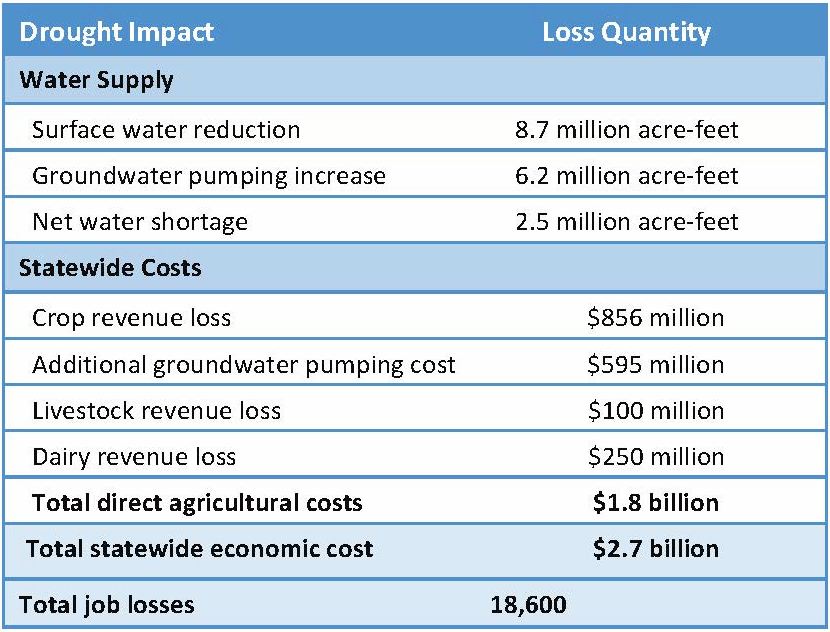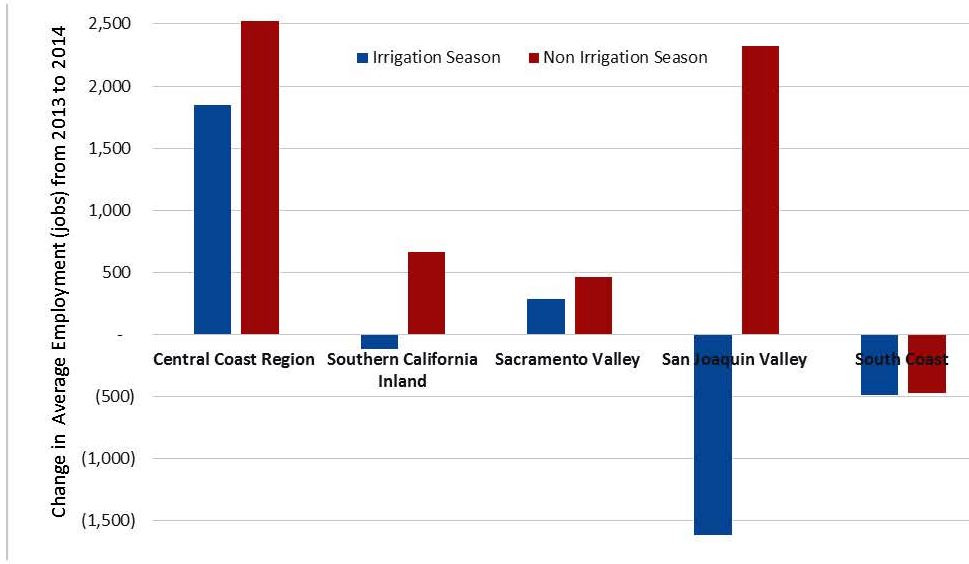Sacramento, California - The drought is expected to be worse for California’s agricultural economy this year because of reduced water availability, according to our preliminary estimates released today.
The study, summarized below, estimates farmers will have 2.7 million acre-feet less surface water than they would in a normal water year — about a 33 percent loss of water supply, on average. The impacts are concentrated mostly in the San Joaquin Valley and are not evenly distributed; individual farmers will face losses of zero to 100 percent.
Expanded groundwater pumping will offset more than 70 percent of this surface water deficit, according to our modeling of how farmers are likely to respond. This leaves a shortage of 2.5 million acre-feet — 9 to 10 percent of the amount normally applied to crops — compared with a net water shortage of 1.5 million acre-feet in 2014.
The estimates, prepared for the California Department of Food and Agriculture, also show that farmers will fallow roughly 560,000 acres or 6 to 7 percent of California’s average annual irrigated cropland.
Estimated Drought Impacts to California Agriculture, 2015

Source:Howitt RE, Medellín-Azuara J, MacEwan D, Lund JR and Sumner DA. 2015. “Preliminary Analysis: 2015 Drought Economic Impact Study,” UC Davis Center for Watershed Sciences.
Economically, the drought seems on track to reduce crop, dairy and livestock revenues by $1.2 billion this year. Pumping costs are expected to reach nearly $600 million. Overall, the drought is estimated to cause direct costs of $1.8 billion — about 4 percent of California’s $45 billion agricultural economy. When we account for the spillover effect of agriculture on the state’s other economic sectors, the total cost of this year’s drought on California’s economy is $2.7 billion and the loss of about 18,600 full- and part-time jobs.
California Agricultural Jobs and the Drought, 2013 -2014
- Agricultural employment increased from 2013 to 2014, but substantial losses of irrigation-season jobs occurred in areas particularly hard-hit by the drought.
- Source: Authors’ calculations using California Employment and Development Department data
The drought induced job losses even while total agricultural employment continued to grow. We estimate further job losses will occur in 2015. As with last year, groundwater, global markets and water markets are greatly reducing the economic impacts of the drought on California’s agriculture and consumers worldwide. Still, considerable local suffering will remain in harder-hit areas.We will update our estimates in the coming months as additional data become available.
Richard Howitt is a professor emeritus of agricultural and resource economics, Josué Medellín-Azuara is a senior researcher and Jay Lund is a professor of civil and environmental engineering with the UC Davis Center for Watershed Sciences. Duncan MacEwan is with ERA Economics in Davis, Calif. Daniel A. Sumner is the Director of the University of California Agricultural Issues Center and Professor of agricultural and resource economics at UC Davis. They are co-authors of the report,“Preliminary Analysis: 2015 Drought Economic Impact Study,” released June 2, 2015.
